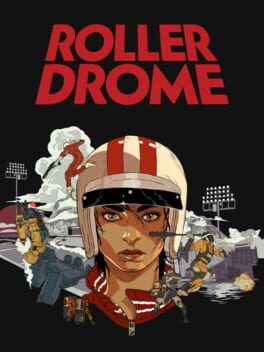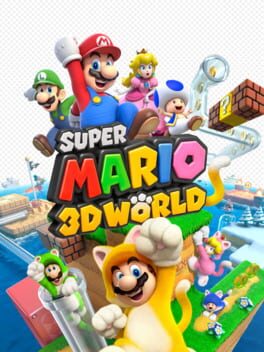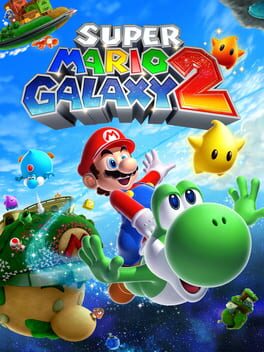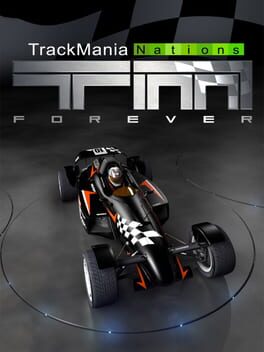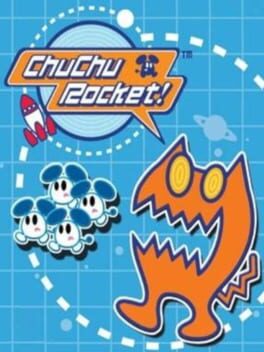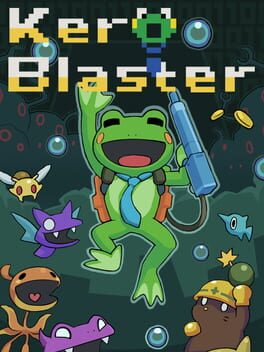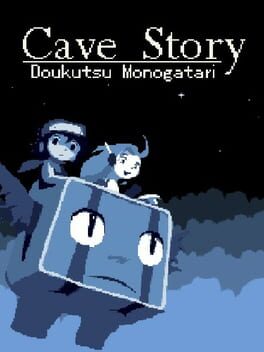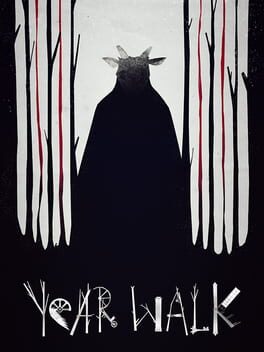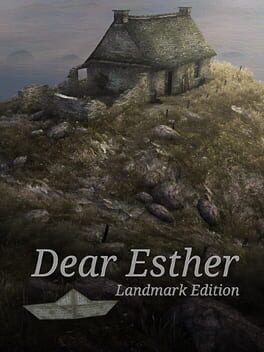antoinebeaumal
BACKER
2022
The artistic direction of this game immediately caught my attention: a reinterpretation of 80s science fiction comic books in the style of "heavy metal." If I were pretentious, I would mention well-known illustrators, but my middle-class, uncultivated side means I only know this aesthetic through the "major boobage" episode of South Park released in 2008.
As has been said many times before, this game is a rare blend of genres: action gameplay with ranking like Devil May Cry, tricks and collectibles akin to Tony Hawk Pro Skater, and slow-motion action scenes reminiscent of Max Payne. Given its mixture of genres, the developers reached a compromise : no balance bar for slides and automatic aiming. Although the Tony Hawk Pro Skater player within me somewhat craves the thrill of endless sliding and the impossibility of crashing to the ground, the game would be even more challenging than it already is.
The career mode left me somewhat skeptical: what is the goal of Rollerdrome? To kill enemies as quickly as possible? To perform the most stylish tricks? To survive? To achieve a high score, one must do a bit of everything simultaneously, constantly being in a state of tension.
In my opinion, the game would benefit from focusing more on the survival aspect of its character. It seems absurd that, for example, one can successfully collect all 5 coins, die, and still have that objective achieved. Dying should be more punitive. As survival is not necessary for fulfilling objectives, players end up replaying the same arenas multiple times with the goal of completing different objectives each time. This fragmentation is detrimental to the career mode. Instead of simply rewarding the player who manages in one run to 1. Survive, 2. Kill efficiently, and 3. Perform the most tricks, it encourages players to choose between these three objectives, which is a shame.
However, I believe the game excels in progressing the player, introducing them to new playstyles. Players gradually learn new skills and the use of new weapons. The level objectives serve to advance us. Some may argue that the game guides the player too much, but in my opinion, Rollerdrome must cater to two types of players: those who want to complete the career mode and those completionists who aim for an "S" tier in every level. The developers have managed to accommodate both types of players quite well.
I often read that the game is "too short" and "doesn't fully exploit its potential." I partially agree. More than its short lifespan, it's the repetition that can become tiresome. For example, the first arena introduces 2 types of enemies (melee guy and sniper girl), the second introduces the rocket launcher guy, and so on. Each level adds a new enemy type on top of the previous ones. It's important to remember that this game was made by a small team of 44 people. The focus (and thankfully so) was on creating a unique gameplay mechanic. I prefer this to a game that lasts over 50 hours but recycles what has already been done in the past.
I really hope there will be a sequel or DLC for Rollerdrome. I would love to have more boss fights or even engage in a duel with an opponent.
As has been said many times before, this game is a rare blend of genres: action gameplay with ranking like Devil May Cry, tricks and collectibles akin to Tony Hawk Pro Skater, and slow-motion action scenes reminiscent of Max Payne. Given its mixture of genres, the developers reached a compromise : no balance bar for slides and automatic aiming. Although the Tony Hawk Pro Skater player within me somewhat craves the thrill of endless sliding and the impossibility of crashing to the ground, the game would be even more challenging than it already is.
The career mode left me somewhat skeptical: what is the goal of Rollerdrome? To kill enemies as quickly as possible? To perform the most stylish tricks? To survive? To achieve a high score, one must do a bit of everything simultaneously, constantly being in a state of tension.
In my opinion, the game would benefit from focusing more on the survival aspect of its character. It seems absurd that, for example, one can successfully collect all 5 coins, die, and still have that objective achieved. Dying should be more punitive. As survival is not necessary for fulfilling objectives, players end up replaying the same arenas multiple times with the goal of completing different objectives each time. This fragmentation is detrimental to the career mode. Instead of simply rewarding the player who manages in one run to 1. Survive, 2. Kill efficiently, and 3. Perform the most tricks, it encourages players to choose between these three objectives, which is a shame.
However, I believe the game excels in progressing the player, introducing them to new playstyles. Players gradually learn new skills and the use of new weapons. The level objectives serve to advance us. Some may argue that the game guides the player too much, but in my opinion, Rollerdrome must cater to two types of players: those who want to complete the career mode and those completionists who aim for an "S" tier in every level. The developers have managed to accommodate both types of players quite well.
I often read that the game is "too short" and "doesn't fully exploit its potential." I partially agree. More than its short lifespan, it's the repetition that can become tiresome. For example, the first arena introduces 2 types of enemies (melee guy and sniper girl), the second introduces the rocket launcher guy, and so on. Each level adds a new enemy type on top of the previous ones. It's important to remember that this game was made by a small team of 44 people. The focus (and thankfully so) was on creating a unique gameplay mechanic. I prefer this to a game that lasts over 50 hours but recycles what has already been done in the past.
I really hope there will be a sequel or DLC for Rollerdrome. I would love to have more boss fights or even engage in a duel with an opponent.
1991
Attention, this is more of a meta-commentary on the importance of positive and passionate criticism than a review.
This is the 4th time I've completed Castlevania IV, a game I discovered in 2011 thanks to the Angry Video Game Nerd's video. Even though criticism from him is now almost non-existent (it seems he only reads from a script and no longer writes his own texts), James was really important to me between 2007 and 2012 (roughly). Each video was a small event and the discovery of a terrible game. Yet in 2011, he made an exception to the rule and spoke passionately about a franchise he loved. Instead of bashing a game, he talked passionately about a game he particularly adored. I liked his style of criticism: a mix of his personal history with the game and a more objective analysis.
In 2024, I have mixed feelings about AVGN (and even being "a fan"), but I still appreciate his series on Castlevania because it tells the story of a gamer's passion rather than capitalizing on "hate content." In my opinion, talking about the content of something you really love is much harder than harsh criticism. I think this creator unfortunately surrounded himself with the wrong people who took advantage of his success. Watching an AVGN video now is painful: it feels like watching a caricature of a caricature.
Anyway, I immediately tried playing Castlevania IV, first on an emulator, then by buying a physical version. I really became a fan of this game, especially because of its sublime dark fantasy graphical style and its absolutely incredible music (there's even a very improbable jazz solo). Generally speaking, it's the unique atmosphere created that stands out, even though the game relies on well-known themes (the castle, bats, mummies, Dracula, etc.). The boss fights are memorable and the difficulty is very well balanced (though it's not exactly easy). So okay, the controls are a bit stiff and there's no save system, but that really doesn't matter to me. It's also one of the last classic platformer Castlevania games. I can only recommend it.
This is the 4th time I've completed Castlevania IV, a game I discovered in 2011 thanks to the Angry Video Game Nerd's video. Even though criticism from him is now almost non-existent (it seems he only reads from a script and no longer writes his own texts), James was really important to me between 2007 and 2012 (roughly). Each video was a small event and the discovery of a terrible game. Yet in 2011, he made an exception to the rule and spoke passionately about a franchise he loved. Instead of bashing a game, he talked passionately about a game he particularly adored. I liked his style of criticism: a mix of his personal history with the game and a more objective analysis.
In 2024, I have mixed feelings about AVGN (and even being "a fan"), but I still appreciate his series on Castlevania because it tells the story of a gamer's passion rather than capitalizing on "hate content." In my opinion, talking about the content of something you really love is much harder than harsh criticism. I think this creator unfortunately surrounded himself with the wrong people who took advantage of his success. Watching an AVGN video now is painful: it feels like watching a caricature of a caricature.
Anyway, I immediately tried playing Castlevania IV, first on an emulator, then by buying a physical version. I really became a fan of this game, especially because of its sublime dark fantasy graphical style and its absolutely incredible music (there's even a very improbable jazz solo). Generally speaking, it's the unique atmosphere created that stands out, even though the game relies on well-known themes (the castle, bats, mummies, Dracula, etc.). The boss fights are memorable and the difficulty is very well balanced (though it's not exactly easy). So okay, the controls are a bit stiff and there's no save system, but that really doesn't matter to me. It's also one of the last classic platformer Castlevania games. I can only recommend it.
2021
When 'comfort food' turns into 'fast food': quickly consumed, quickly forgotten. When you've put in the effort to play through Mario's 3D series from the beginning, one can't help but feel disappointed, especially when considering Super Mario 3D World as a follow-up to Super Mario Galaxy: the game feels quite conventional both in its physics, its movement possibilities, and its level design.
I'd almost venture to say it's more of a Mario 2.5D, given how the camera remains predominantly fixed (sometimes offering a choice of 3 viewing angles, and that's it). I can't quite find the words, but it feels like a detachment from the character, creating less immersion.
It also seems like the first game where Nintendo is recycling ideas rather than introducing new ones. Aside from the multiplayer mode (which I haven't tried) and the integration of the Wiiverse (RIP), the game revisits worlds and themes that are overly familiar. It appears to rely on gimmicks rather than innovative ideas. The cat suit is a prime example: it's amusing, it looks nice on the game cover, but in reality, it detracts from the gameplay because it's too overpowered. You end up wanting to have it all the time, which is a shame for other power-ups.
Regarding bosses, even though I know it's not Mario's strong suit, the simplification here seems somewhat absurd. In fact, it feels like the game almost abandons the concept of bosses altogether, turning the Bowser cat phase (final boss) into essentially a platforming segment. They didn't even try.
Now, it's evident that this game has clear strengths, particularly in its accessibility (it could be the ideal first Mario game), its vibrant graphics, and its music. It's from the perspective of considering Super Mario 3D World as a sequel to Mario Galaxy (Super Mario Gravity, I'm counting on you) that I was disappointed.
I'd almost venture to say it's more of a Mario 2.5D, given how the camera remains predominantly fixed (sometimes offering a choice of 3 viewing angles, and that's it). I can't quite find the words, but it feels like a detachment from the character, creating less immersion.
It also seems like the first game where Nintendo is recycling ideas rather than introducing new ones. Aside from the multiplayer mode (which I haven't tried) and the integration of the Wiiverse (RIP), the game revisits worlds and themes that are overly familiar. It appears to rely on gimmicks rather than innovative ideas. The cat suit is a prime example: it's amusing, it looks nice on the game cover, but in reality, it detracts from the gameplay because it's too overpowered. You end up wanting to have it all the time, which is a shame for other power-ups.
Regarding bosses, even though I know it's not Mario's strong suit, the simplification here seems somewhat absurd. In fact, it feels like the game almost abandons the concept of bosses altogether, turning the Bowser cat phase (final boss) into essentially a platforming segment. They didn't even try.
Now, it's evident that this game has clear strengths, particularly in its accessibility (it could be the ideal first Mario game), its vibrant graphics, and its music. It's from the perspective of considering Super Mario 3D World as a sequel to Mario Galaxy (Super Mario Gravity, I'm counting on you) that I was disappointed.
2010
As I recently played (and for the first time) Mario Galaxy 1, it's hard for me to consider it anything other than a kind of 'obese DLC' to a game that particularly amazed me. I can understand that the player of 2010 might have been disappointed to only have 'a sequel'. Its status in 2024 is a bit strange: while we can play the 1st on Switch, the 2nd is 'locked' on Wii. It's important to keep in mind that this game was probably designed around the use of Wii remotes and cannot be 'directly' ported to another console. The Mario Galaxy games are thus victims of the 'motion control' trend of their time. However, I found that the controls in these Mario games were truly exceptional, and going back to more limited controls (I'm currently playing 3D World) was experienced as a regression and simplification.
Mario Galaxy 2 therefore lacks the charm of the first time and is a game that relies on the achievements of the first while adding interesting mechanics. I would rather consider Galaxy 1 and 2 as a single, absolutely beautiful long game. The level design is incredible, the music is incredible, the graphics are incredible.
However, some levels in the 2nd are relatively tough in terms of difficulty. Having recently completed Mario Wonder almost in one go without real hitches, I appreciate that a Mario game offers a certain challenge even in its main missions. I find it unfortunate that a game places difficult levels as a kind of additional content that exists alongside the game. Obviously, this is justified on Nintendo's part, which aims to appeal to a very young and inexperienced audience. We'll never have access to this kind of statistic, but I'm willing to bet that a significant percentage of players at the time never finished Galaxy 2, unlike 3D World or Wonder.
There's no reason to miss out on this platformer. Personally, I bought the Wii (€15) + Galaxy 1 and 2 (€20) + an HDMI converter cable (€25, the most expensive investment) for a total of €60. No need to wait for a disappointing HD reissue.
Mario Galaxy 2 therefore lacks the charm of the first time and is a game that relies on the achievements of the first while adding interesting mechanics. I would rather consider Galaxy 1 and 2 as a single, absolutely beautiful long game. The level design is incredible, the music is incredible, the graphics are incredible.
However, some levels in the 2nd are relatively tough in terms of difficulty. Having recently completed Mario Wonder almost in one go without real hitches, I appreciate that a Mario game offers a certain challenge even in its main missions. I find it unfortunate that a game places difficult levels as a kind of additional content that exists alongside the game. Obviously, this is justified on Nintendo's part, which aims to appeal to a very young and inexperienced audience. We'll never have access to this kind of statistic, but I'm willing to bet that a significant percentage of players at the time never finished Galaxy 2, unlike 3D World or Wonder.
There's no reason to miss out on this platformer. Personally, I bought the Wii (€15) + Galaxy 1 and 2 (€20) + an HDMI converter cable (€25, the most expensive investment) for a total of €60. No need to wait for a disappointing HD reissue.
I've decided that from now on, I'm going to hook the reader with a clickbait title. Here's my title:
if you enjoyed Celeste, you might loveTrackmania Nations Forever.
Disclaimers: I'm not a fan of cars in real life. 2. I'm not a fan (at first glance) of simulation games. Luckily, Trackmania Nations Forever isn't a game for car enthusiasts or simulation fans. I'd go even further: it's not really a traditional racing game. You don't navigate the 65 tracks to beat opponents but to beat a time. The whole appeal of the game lies in this singular goal: a certain idea of perfectionism.
Everything surrounding this goal is far from perfect: TMNF's graphics are generally quite generic despite some nice lighting effects. The music is a kind of dull lounge house. There's no damage physics, all cars have the same characteristics. All tracks seem to have been made with the same level editor.
What makes TMNF a great game is the driving mechanics. The simplistic controls (accelerate, turn left, right, and sometimes brake) demand great precision. It's all about perfect timing. Revelation for me: I realize that racing games are mostly 3D games but with 2D game controls. Like a platformer, inputs could be articulated on a simple X-axis (left and right) and Y-axis (accelerate, brake). I'd struggle to say why this particular game has such exceptional control, but it's a feeling I've never had in any racing game before. It's both immediately easy to grasp but exponentially difficult to master.
You do need a certain mindset to get into this game: having the 'grind' culture. Being a bit obstinate to restart the same course dozens or even hundreds of times to get the medal you want (for me, I stopped at the gold medal). A bit like Celeste, we work on micro-segments (the average duration of a race is about 45 sec.) that we must master. Another totally unique element of this game is the ability to 'brake in the air' and decide on your trajectory (like a 2D platformer). It's physically totally improbable but very interesting in terms of gameplay.
There's obviously a highly competitive aspect and a ranking system on two scales: a local one (a bronze to Nadeo medal system (higher than Gold)) and a quite laughable global leaderboard system. It's always fun to be proud of one of these courses before realizing that you're just entering the top 100,000 worldwide. The somewhat comical patriotic or regional aspect, I'm quite proud to be in the top 100 of a part of Switzerland (which is not already a big country).
Anyway, play it, it's free
if you enjoyed Celeste, you might loveTrackmania Nations Forever.
Disclaimers: I'm not a fan of cars in real life. 2. I'm not a fan (at first glance) of simulation games. Luckily, Trackmania Nations Forever isn't a game for car enthusiasts or simulation fans. I'd go even further: it's not really a traditional racing game. You don't navigate the 65 tracks to beat opponents but to beat a time. The whole appeal of the game lies in this singular goal: a certain idea of perfectionism.
Everything surrounding this goal is far from perfect: TMNF's graphics are generally quite generic despite some nice lighting effects. The music is a kind of dull lounge house. There's no damage physics, all cars have the same characteristics. All tracks seem to have been made with the same level editor.
What makes TMNF a great game is the driving mechanics. The simplistic controls (accelerate, turn left, right, and sometimes brake) demand great precision. It's all about perfect timing. Revelation for me: I realize that racing games are mostly 3D games but with 2D game controls. Like a platformer, inputs could be articulated on a simple X-axis (left and right) and Y-axis (accelerate, brake). I'd struggle to say why this particular game has such exceptional control, but it's a feeling I've never had in any racing game before. It's both immediately easy to grasp but exponentially difficult to master.
You do need a certain mindset to get into this game: having the 'grind' culture. Being a bit obstinate to restart the same course dozens or even hundreds of times to get the medal you want (for me, I stopped at the gold medal). A bit like Celeste, we work on micro-segments (the average duration of a race is about 45 sec.) that we must master. Another totally unique element of this game is the ability to 'brake in the air' and decide on your trajectory (like a 2D platformer). It's physically totally improbable but very interesting in terms of gameplay.
There's obviously a highly competitive aspect and a ranking system on two scales: a local one (a bronze to Nadeo medal system (higher than Gold)) and a quite laughable global leaderboard system. It's always fun to be proud of one of these courses before realizing that you're just entering the top 100,000 worldwide. The somewhat comical patriotic or regional aspect, I'm quite proud to be in the top 100 of a part of Switzerland (which is not already a big country).
Anyway, play it, it's free
1999
Similar to Fantavision (a fireworks game released on the day of the PS2 launch), Chuchurocket is somewhat of an oddity: a puzzle game with very simple graphics that doesn't fully utilize the power of the new console.
Although I'm usually a fan of this genre of puzzle games, I find that Chuchu Rocket lacks depth in its gameplay, which seems to be identical from level 1 to 100. Regardless of the level, the mice move in straight lines, turning right when they hit a wall. There are two types of dangers: cats and voids. It's a bit lacking in terms of variety.
The difficulty is also strangely managed: sometimes too easy, sometimes challenging, but too often completely random; the levels progress with boredom. Nevertheless, I persisted in finishing this game because there's something fundamentally oddly satisfying about seeing these lines of little mice narrowly avoiding enemies
Hard to really recommend it
Although I'm usually a fan of this genre of puzzle games, I find that Chuchu Rocket lacks depth in its gameplay, which seems to be identical from level 1 to 100. Regardless of the level, the mice move in straight lines, turning right when they hit a wall. There are two types of dangers: cats and voids. It's a bit lacking in terms of variety.
The difficulty is also strangely managed: sometimes too easy, sometimes challenging, but too often completely random; the levels progress with boredom. Nevertheless, I persisted in finishing this game because there's something fundamentally oddly satisfying about seeing these lines of little mice narrowly avoiding enemies
Hard to really recommend it
2014
Successor (or not) to Cave Story, Kero Blaster goes against what one might expect from a sequel: the storytelling simplifies, transitioning from a semi-open metroidvania format to a linear game, and the lifespan is half as short. Yet, this shift isn't truly a subtraction but a refinement. Kero Blaster is much more enjoyable to play than Cave Story: the physics, the gameplay, the progression, the enemies, the weapons, etc... all come together in an organic and thoughtful manner. Instead of indulging in the grandiosity of levels and storytelling, it seems Daisuke Amaya worked on his game like a miniature.
Many somewhat pompous terms from me for a game that's essentially fun from start to finish. I'm really a fan of the difficulty progression: if you're stuck in a tough passage, you keep accumulating gold coins which grant access to extra lives and other upgrades. Even in defeat, you make progress.
A great "small" game to absolutely experience.
Many somewhat pompous terms from me for a game that's essentially fun from start to finish. I'm really a fan of the difficulty progression: if you're stuck in a tough passage, you keep accumulating gold coins which grant access to extra lives and other upgrades. Even in defeat, you make progress.
A great "small" game to absolutely experience.
1990
When I was a child, there was a supermarket where you could find one of those SNES stands (exactly like this one https://imgur.com/a/IhkmWSh) that only played Super Mario World. Too shy, I never dared to play because there was always a crowd gathering around. Taking the shiny controller (it was shiny because it was greasy from the sebum of dozens of children) meant being watched by an impatient crowd. I didn't want to embarrass myself.
It's a strange coincidence that I never played SMW before that day. And what a mistake! The level design, the graphics, the music: everything is incredible and still interesting today. Maybe Mario 3 on NES (another untouched classic) had already introduced this, but I find it interesting to add 'dead ends' to some levels. This breaks the linearity of the game, which can be too easily criticized in 2D games.
I don't have much to add to the thousands of existing reviews except to insist that the game's inventiveness seems to crescendo: the further you progress, the more interesting it becomes. No dull moments: even the 'aquatic' moments and the 'oh, now the platforms are slippery' moments that seem to be obligatory passages in platformers are interesting and engaging here. Even if it's a criticism that can be made of most Mario games: the boss fights are sometimes too short, I would have loved bosses like the final showdown with Bowser, which is particularly epic.
Definitely a game I will replay in the future, and perhaps with a more 'completionist' approach. Finishing the game with only 50% progress has two effects on me: discouragement or encouragement. SMW falls into the latter category.
It's a strange coincidence that I never played SMW before that day. And what a mistake! The level design, the graphics, the music: everything is incredible and still interesting today. Maybe Mario 3 on NES (another untouched classic) had already introduced this, but I find it interesting to add 'dead ends' to some levels. This breaks the linearity of the game, which can be too easily criticized in 2D games.
I don't have much to add to the thousands of existing reviews except to insist that the game's inventiveness seems to crescendo: the further you progress, the more interesting it becomes. No dull moments: even the 'aquatic' moments and the 'oh, now the platforms are slippery' moments that seem to be obligatory passages in platformers are interesting and engaging here. Even if it's a criticism that can be made of most Mario games: the boss fights are sometimes too short, I would have loved bosses like the final showdown with Bowser, which is particularly epic.
Definitely a game I will replay in the future, and perhaps with a more 'completionist' approach. Finishing the game with only 50% progress has two effects on me: discouragement or encouragement. SMW falls into the latter category.
2004
I'm glad I took the time on the OG of indie plateformer. Totally impressed by the fact that it's the sole creation of one man: what generosity. Like any great game, Cave Story has several layers that one discovers gradually, making the experience truly unique.
Layer 1: 'Wow, charming graphics and incredible music.'
Layer 2: 'Very good gameplay, the progression of armor and upgrades is really well thought out.'
Layer 3: 'Ah, but the level design works like a metroidvania.'
Layer 4: 'The bosses are really interesting and sometimes really brutal.'
Layer 5: 'There are really a lot of secret areas and parallel quests.'
Layer 6: 'The story is really gripping and it seems like my choices have consequences.'
Layer 7: 'Oh no :( this part is sad. In fact, I'm really attached to the characters.'
Layer 8: 'Okay, 4 end boss phases and I only got the easy ending?'
In short, I feel like I've only scratched the surface of this great game.
Layer 1: 'Wow, charming graphics and incredible music.'
Layer 2: 'Very good gameplay, the progression of armor and upgrades is really well thought out.'
Layer 3: 'Ah, but the level design works like a metroidvania.'
Layer 4: 'The bosses are really interesting and sometimes really brutal.'
Layer 5: 'There are really a lot of secret areas and parallel quests.'
Layer 6: 'The story is really gripping and it seems like my choices have consequences.'
Layer 7: 'Oh no :( this part is sad. In fact, I'm really attached to the characters.'
Layer 8: 'Okay, 4 end boss phases and I only got the easy ending?'
In short, I feel like I've only scratched the surface of this great game.
2013
There is a German word that has always intrigued me: "Waldeinsamkeit," which roughly translates to "the feeling of solitude experienced in a forest." Even though Year Walk is Swedish and not German, I think this concept suits it perfectly. Unfortunately, being more of a mountain person at heart, I struggled to appreciate getting lost in this charming setting. The iPad version (to my knowledge?) lacks a map system, making the game more cumbersome.
Beyond that, the game falls into that precious category for me, which is "folkloric horror," alongside Mundaun, another game dear to my heart. The puzzles here are really well-crafted and balanced, although I found the final part slightly less interesting. It's worth noting that the game has a "good/bad ending" system that I find a bit ridiculous (was it really necessary, honestly?).
Lots of charm but underexploited.
Beyond that, the game falls into that precious category for me, which is "folkloric horror," alongside Mundaun, another game dear to my heart. The puzzles here are really well-crafted and balanced, although I found the final part slightly less interesting. It's worth noting that the game has a "good/bad ending" system that I find a bit ridiculous (was it really necessary, honestly?).
Lots of charm but underexploited.
2012
« It's not about the destination, it's about the journey » blahblahblah. But can a 1-hour walking sim be qualified as a "journey"? What audacity.
It annoys me because I think I felt good into the game 15 minutes before the end. The scenery, the music, everything was there to please me, but here's the thing: it's too short. It leans more towards the arty side than the gamy one, and that's a shame.
It annoys me because I think I felt good into the game 15 minutes before the end. The scenery, the music, everything was there to please me, but here's the thing: it's too short. It leans more towards the arty side than the gamy one, and that's a shame.
1999
This is basically a "parenting fail" compilations
This game is a work of art, plain and simple. The atmosphere created is completely in symbiosis with the materials of its time. The vibrant and peculiar 3D of the PS1, its inability to render depth of field, the audio limitations that slow down the dialogues (it feels like being in a Rohmer film): remove one of these elements and the house of cards collapses. Remastering this title is impossible.
The game is TRULY frightening on many levels. To highlight just one element: the radio alarm. You always know there's an enemy nearby, but where? No jump scares: the game doesn't aim to scare us, but rather to terrorize us. I finished the game in 3 sessions and sometimes I was relieved to turn off the PlayStation because the atmosphere is so oppressive. My neck is still tense from this experience. Harry is never in a safe space; the player is always in danger.
The sound atmosphere and music, like any good horror film, are the scoliotic backbone of this hell. Between haunting drones and dark industrial sounds, the hearing is put to the test. Let it be known, I don't think I'll buy the vinyl to listen to it on a Sunday afternoon, unless I'm in need of an anxiety attack (aka never).
However, I must admit that I played it like a 'walking sim' by putting the game on 'easy' mode. The gameplay itself has aged relatively poorly, and the boss scenes are particularly bad. The interesting part lies in exploration and puzzle-solving. Its way of revealing the game's lore through objects and descriptions enhances immersion. I also have to admit that I am particularly a fan of the 'evolving' map system that prevents us from having to repeatedly open a locked door 15 times in a row. I look forward to playing the sequels
This game is a work of art, plain and simple. The atmosphere created is completely in symbiosis with the materials of its time. The vibrant and peculiar 3D of the PS1, its inability to render depth of field, the audio limitations that slow down the dialogues (it feels like being in a Rohmer film): remove one of these elements and the house of cards collapses. Remastering this title is impossible.
The game is TRULY frightening on many levels. To highlight just one element: the radio alarm. You always know there's an enemy nearby, but where? No jump scares: the game doesn't aim to scare us, but rather to terrorize us. I finished the game in 3 sessions and sometimes I was relieved to turn off the PlayStation because the atmosphere is so oppressive. My neck is still tense from this experience. Harry is never in a safe space; the player is always in danger.
The sound atmosphere and music, like any good horror film, are the scoliotic backbone of this hell. Between haunting drones and dark industrial sounds, the hearing is put to the test. Let it be known, I don't think I'll buy the vinyl to listen to it on a Sunday afternoon, unless I'm in need of an anxiety attack (aka never).
However, I must admit that I played it like a 'walking sim' by putting the game on 'easy' mode. The gameplay itself has aged relatively poorly, and the boss scenes are particularly bad. The interesting part lies in exploration and puzzle-solving. Its way of revealing the game's lore through objects and descriptions enhances immersion. I also have to admit that I am particularly a fan of the 'evolving' map system that prevents us from having to repeatedly open a locked door 15 times in a row. I look forward to playing the sequels
This review contains spoilers
A Zelda game inspired by Twin Peaks that has nothing to do with the other Zeldas: if only spin-offs of well-known series could have the quality of this game.
Originally conceived as an adaptation of A Link to the Past, the game became something entirely different. The transition from SNES to GameBoy at the time often meant a degradation of the original product due to the technical limitations of the device. I had been traumatized by the GB version of Donkey Kong Country. Here, with Zelda, it's completely different; we're not faced with a 'lite' version. Even though the world of Link's Awakening is smaller in size than A Link to the Past, I felt more like this game added elements rather than removing them. We have more cutscenes, memorable characters, and more music (which is incredible, by the way).
Certainly, we return to a linear gameplay pattern, but the game's progression is exceptional. It feels like each 'square' of the map is used optimally. The size of the world, in my opinion, is ideal: neither too big nor too small. With each new item, we enjoy revisiting this world to discover new secrets, whereas A Link to the Past with its two parallel worlds seemed too large and confusing to me. Is Link's Awakening easier? If compared to its predecessors, the answer is clearly yes.
Spoilers: After discovering that the island is just a dream, I was struck by the fact that we view the game in a more melancholic light. Perhaps it's a metaphor for the player, but finishing the game means the disappearance of Koholint. The ambivalence in which we find ourselves is truly unique. After reading the mural, we enter the sixth dungeon and this music plays on loop, which I find particularly sad: https://www.youtube.com/watch?v=4X6UqQDmjBk
It's the first Zelda game that I played and finished (thanks to a magazine) that I absolutely loved. Almost 25 years later, the experience is almost the same. I played it with a smile.
Originally conceived as an adaptation of A Link to the Past, the game became something entirely different. The transition from SNES to GameBoy at the time often meant a degradation of the original product due to the technical limitations of the device. I had been traumatized by the GB version of Donkey Kong Country. Here, with Zelda, it's completely different; we're not faced with a 'lite' version. Even though the world of Link's Awakening is smaller in size than A Link to the Past, I felt more like this game added elements rather than removing them. We have more cutscenes, memorable characters, and more music (which is incredible, by the way).
Certainly, we return to a linear gameplay pattern, but the game's progression is exceptional. It feels like each 'square' of the map is used optimally. The size of the world, in my opinion, is ideal: neither too big nor too small. With each new item, we enjoy revisiting this world to discover new secrets, whereas A Link to the Past with its two parallel worlds seemed too large and confusing to me. Is Link's Awakening easier? If compared to its predecessors, the answer is clearly yes.
Spoilers: After discovering that the island is just a dream, I was struck by the fact that we view the game in a more melancholic light. Perhaps it's a metaphor for the player, but finishing the game means the disappearance of Koholint. The ambivalence in which we find ourselves is truly unique. After reading the mural, we enter the sixth dungeon and this music plays on loop, which I find particularly sad: https://www.youtube.com/watch?v=4X6UqQDmjBk
It's the first Zelda game that I played and finished (thanks to a magazine) that I absolutely loved. Almost 25 years later, the experience is almost the same. I played it with a smile.
This game made me want to spend my mid-November vacation in Scotland. It's a clear proof that video games can have a negative influence.
The game is beautiful, especially the light effects, which are very well done. However, it's still a bit lacking in creating a real emotional connection. I also find that the writing is intentionally vague (which in itself is not a bad thing), but it's still frustrating.
The game is beautiful, especially the light effects, which are very well done. However, it's still a bit lacking in creating a real emotional connection. I also find that the writing is intentionally vague (which in itself is not a bad thing), but it's still frustrating.
I have a lot of bias towards this game: I love it and I hate it. By the early 2000s, it was already established that the Zeldas were masterpieces, notably thanks to Ocarina of Time and Majora’s Mask. Not having a Nintendo 64, I didn’t have the chance to play them on their release day. The only Zelda I had played was Link’s Awakening on GameBoy Color in 1998, which I particularly loved. In 1999, I managed to find a copy of Link to the Past at a garage sale for a relatively high price (I believe it was 40€). Unfortunately, the game was in German, but I still tried to play it. I never managed to find the third medallion and remained stuck for a long time, excessively frustrated because I loved everything about the game. But the language barrier made the experience difficult. It was also impossible for me to use the manual (I only bought the cartridge), and I couldn't get my hands on a guide (this was in 1999, I remind you, I didn't have internet at home yet, and printed guides were unavailable at that time).
I think we forget that this kind of game can be particularly opaque and cryptic, even though LTTP is more accessible than the first installment of the saga. The impatient player then has two options to bypass the secrets of this game: the complete guide (and spoil the experience) or the hint for a boost. In this sense, the integration of the NPC who guides you for 30 rupees is a stroke of genius that I would have loved to discover as a child instead of raging on my own, cutting all the bushes in the game (I could have also learned German, what a noob)... Are there still players who will have a similar experience to mine nowadays? I posit here as a hypothesis that the lost player who does not have access to any form of "guidance" has practically disappeared.
Many critics rightly emphasized that LTTP has an absolutely gigantic semi-open world with the particular twist of the change thanks to the mirror. This part is especially remembered because it foreshadows the games to come. But when you really play this game, you forget that LTTP has a half of games close to the dungeon crawling genre, a genre immensely more popular at that time. Japan in particular was marked by the legacy of Wizardry. It's really fascinating to imagine that LTTP (and perhaps a major part of the Zelda series? I'm not an expert, so I'll remain cautious) was at the crossroads between open-world adventure and dungeon crawling. It raises the theoretical question: if the critics hadn't praised the open world of Zelda so much, would the series have become a series of dungeon games? In a parallel Bizarro world, would BOTW have looked like a Lunacid-type game and would Lunacid have been a game that pays homage to the open world? I'm totally digressing.
The game is truly a revolutionary masterpiece. The evolution between LTTP and The Legend of Zelda released 6 years earlier is staggering, even from a technical point of view. Although we live in completely different eras where graphics evolved extremely rapidly, it's amusing to think about this in perspective of a comparison between BOTW and TOTK, which also have almost 6 years apart and are, for all intents and purposes, identical.
Yet despite all the "objective" and qualitative data of this game, well ... I got a little bored in the middle of the game. The alternation between open-world and dungeons becomes a bit repetitive, but fortunately the end is amazing (since the ice dungeon, I would say).
A little annoyance on my part: trying to use online guides only as a last resort (for example, if I'm stuck for more than an hour), I managed relatively well until I got to Trinexx. Impossible for me to figure out how to defeat him on my own. Searching online, I discover that I need the "ice wand." I go to get it and I realize that I can never kill the dragon heads, even with 3 magic bars. I finally realize that my sword is only level 2. I realize that I completely missed the upgrades. Overall, it annoyed me because none of these items are necessary before. This kind of "dead end" is really annoying and discouraging. Without recourse to a guide, I would probably have given up at this point.
Another important point, in terms of narration, LTTP is in line with its predecessors: few dialogues, few memorable secondary characters. The game is more focused on its gameplay and level design while remaining relatively quiet. You either like it or you don't. Even though I struggle with games that are too talkative, I think I might have liked to be more involved in the world of Hyrule. LTTP remains very "gamey": I finished dungeon 5, let's go to dungeon 6. We generally don't care about the story, which is not a bad thing in itself. Add to that the fact that the game is generally very serious. It seems to me that the subsequent games often have more "dorky" moments.
Anyway, I'm glad to have turned this frustrating page of my existence.
I think we forget that this kind of game can be particularly opaque and cryptic, even though LTTP is more accessible than the first installment of the saga. The impatient player then has two options to bypass the secrets of this game: the complete guide (and spoil the experience) or the hint for a boost. In this sense, the integration of the NPC who guides you for 30 rupees is a stroke of genius that I would have loved to discover as a child instead of raging on my own, cutting all the bushes in the game (I could have also learned German, what a noob)... Are there still players who will have a similar experience to mine nowadays? I posit here as a hypothesis that the lost player who does not have access to any form of "guidance" has practically disappeared.
Many critics rightly emphasized that LTTP has an absolutely gigantic semi-open world with the particular twist of the change thanks to the mirror. This part is especially remembered because it foreshadows the games to come. But when you really play this game, you forget that LTTP has a half of games close to the dungeon crawling genre, a genre immensely more popular at that time. Japan in particular was marked by the legacy of Wizardry. It's really fascinating to imagine that LTTP (and perhaps a major part of the Zelda series? I'm not an expert, so I'll remain cautious) was at the crossroads between open-world adventure and dungeon crawling. It raises the theoretical question: if the critics hadn't praised the open world of Zelda so much, would the series have become a series of dungeon games? In a parallel Bizarro world, would BOTW have looked like a Lunacid-type game and would Lunacid have been a game that pays homage to the open world? I'm totally digressing.
The game is truly a revolutionary masterpiece. The evolution between LTTP and The Legend of Zelda released 6 years earlier is staggering, even from a technical point of view. Although we live in completely different eras where graphics evolved extremely rapidly, it's amusing to think about this in perspective of a comparison between BOTW and TOTK, which also have almost 6 years apart and are, for all intents and purposes, identical.
Yet despite all the "objective" and qualitative data of this game, well ... I got a little bored in the middle of the game. The alternation between open-world and dungeons becomes a bit repetitive, but fortunately the end is amazing (since the ice dungeon, I would say).
A little annoyance on my part: trying to use online guides only as a last resort (for example, if I'm stuck for more than an hour), I managed relatively well until I got to Trinexx. Impossible for me to figure out how to defeat him on my own. Searching online, I discover that I need the "ice wand." I go to get it and I realize that I can never kill the dragon heads, even with 3 magic bars. I finally realize that my sword is only level 2. I realize that I completely missed the upgrades. Overall, it annoyed me because none of these items are necessary before. This kind of "dead end" is really annoying and discouraging. Without recourse to a guide, I would probably have given up at this point.
Another important point, in terms of narration, LTTP is in line with its predecessors: few dialogues, few memorable secondary characters. The game is more focused on its gameplay and level design while remaining relatively quiet. You either like it or you don't. Even though I struggle with games that are too talkative, I think I might have liked to be more involved in the world of Hyrule. LTTP remains very "gamey": I finished dungeon 5, let's go to dungeon 6. We generally don't care about the story, which is not a bad thing in itself. Add to that the fact that the game is generally very serious. It seems to me that the subsequent games often have more "dorky" moments.
Anyway, I'm glad to have turned this frustrating page of my existence.
